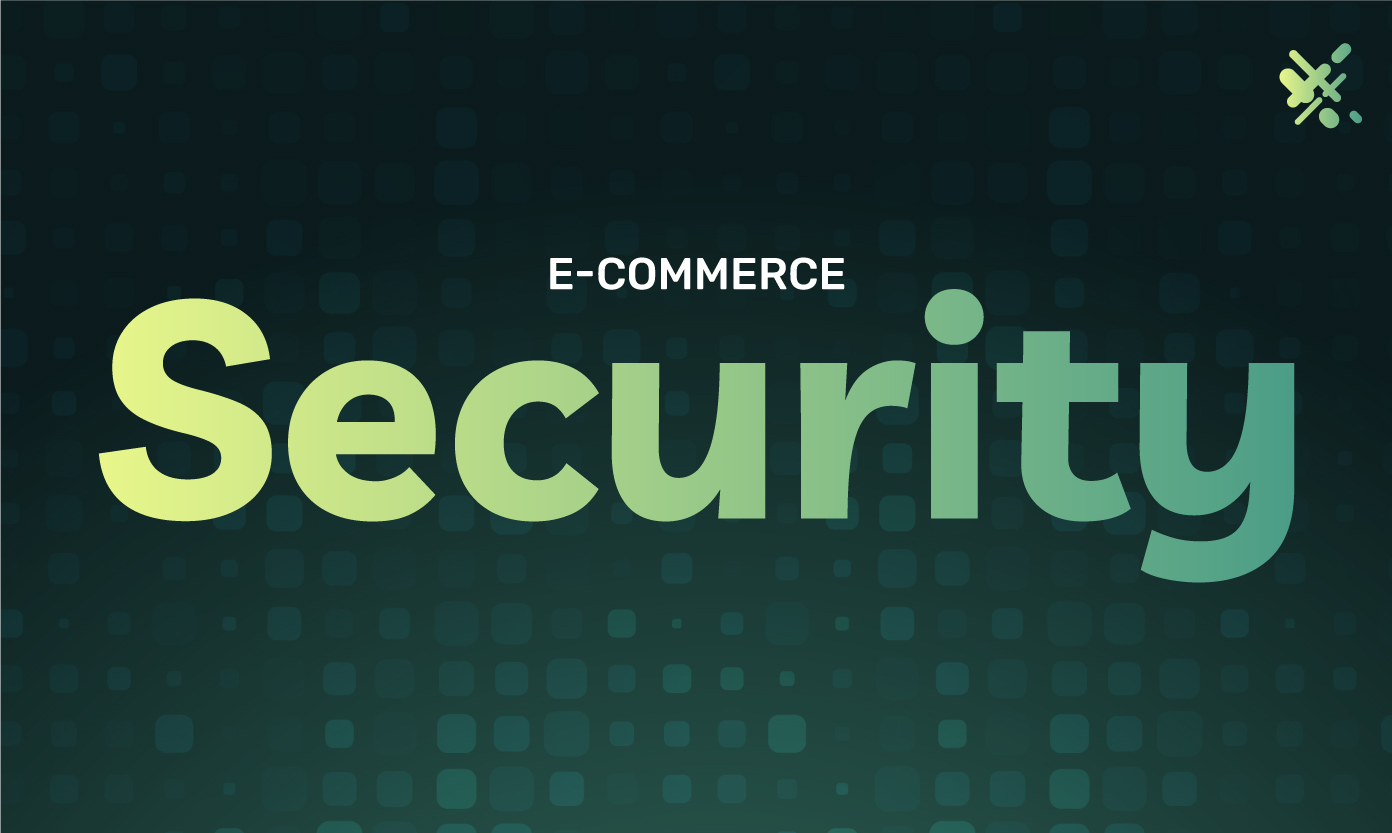The e-commerce retail sector has grown dramatically for decades. Recently, it received a more significant boost as pandemic measures increased the time people spent online and, consequently, online shopping. While this massive growth in e-commerce has been a boon for many entrepreneurs, it also comes with some risks. Because of the high demand and growth in e-commerce, it has attracted its share of hackers and cybercriminals. As a result, online merchants must embrace adequate e-commerce security.
With e-commerce businesses handling vast volumes of traffic and millions of dollars in digital transactions, it makes for the perfect target. While many businesses only have a portion of their systems that are accessible through the Internet, an e-commerce business essentially has its entire infrastructure accessible.
The only thing separating your business systems from a hacker is your security. Therefore, your e-commerce security strategy needs to always be up to date. Even a minor breach in security can lead to considerable monetary damage and a loss of reputation and trust.
Below, we’ll go over the details of a sound e-commerce security strategy so you can protect your business. We’ll also explain how to keep your payment systems safe for your business and customers.
What Is E-commerce Security?
E-commerce security is a blanket term. It encompasses a business’s efforts and strategies to protect its online infrastructure. You can think of online store security as a physical store with a loss prevention department or other security operations.
In e-commerce, security protects against data theft, unauthorized access, and fraud. E-commerce security can often be complex since it stretches across different technologies and touches almost every aspect of an online business.
A hacker only needs one entry point to make inroads into an e-commerce business. These minor intrusions can lead to considerable losses and upset customers if undetected.
Why Is Online Security Important?
Security breaches can expose your business’s private information. It can also be disruptive to your business operations. In some cases, an online security breach can result in a business being offline for weeks. For some businesses, this may be catastrophic.
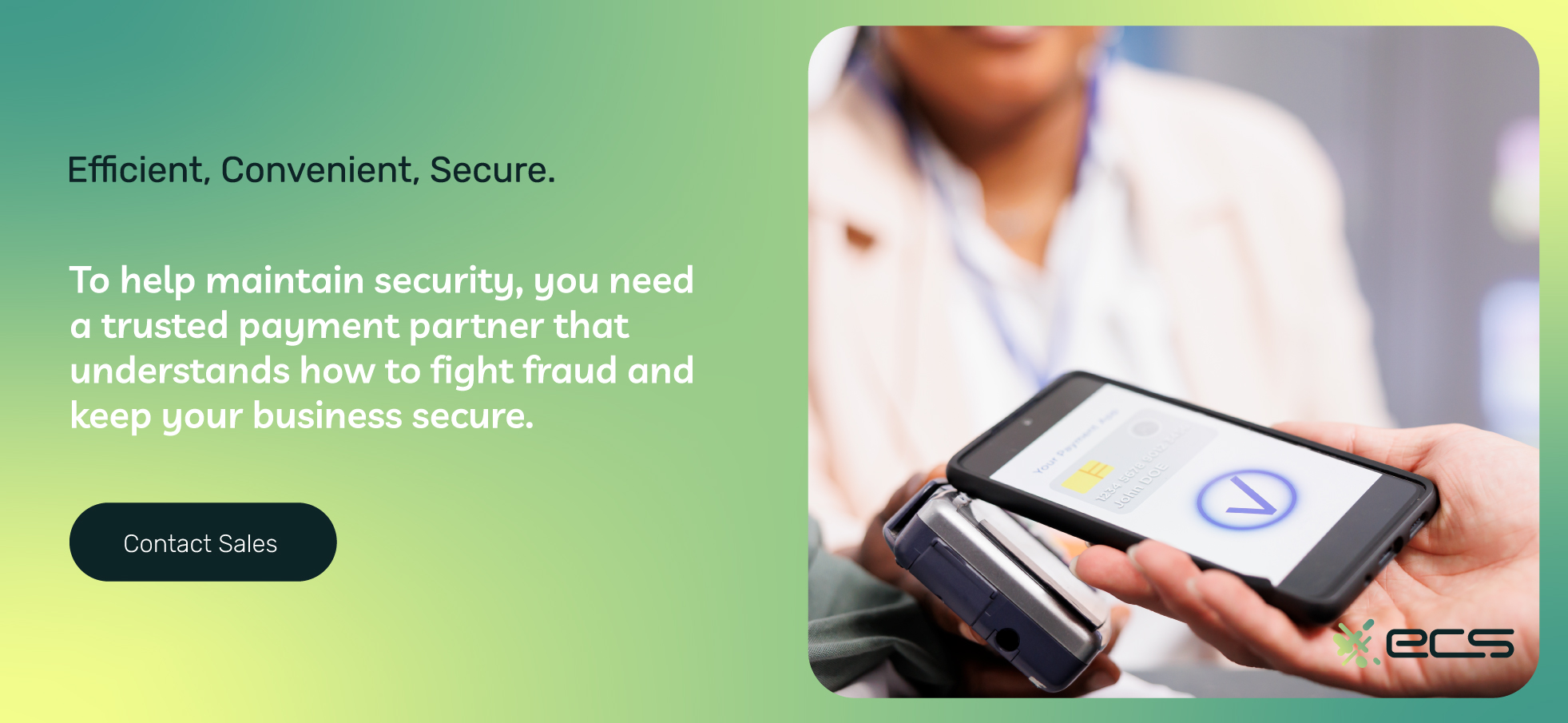
How Does Internet Security Work?
Internet security is the process and techniques to secure your systems and data. It covers the following three areas.
Customer Privacy
For any e-commerce business, private customer data security must be paramount. Customers trust your business with sensitive personal and financial information like credit card numbers.
Beyond the monetary and reputational damage a privacy breach can cause, there are also legal implications. Many states and the federal government have rules and regulations regarding the proper handling of customer data.
From an e-commerce payment processing standpoint, merchants must follow strict privacy and data regulations depending on their transaction volumes and other factors.
Accuracy and Integrity
The integrity and accuracy of your data are vital to maintaining e-commerce security. Therefore, you must prevent any unauthorized access to your data that could compromise its integrity. Hackers can change data without you knowing it, creating a more comprehensive security issue than the original breach.
Authentication Measures for E-commerce
Another critical area of overall e-commerce cyber security is authentication. Authentication should be at the root of every transaction and access point. Whether for customers signing in and making purchases or your employees accessing critical network assets, authentication has to always be a top concern.
Authentication also goes both ways. Your customers should be able to easily recognize your site and its security features, such as a secure socket layer, SSL encryption, and other protocols. It also means ensuring that your business and privacy policies are clearly presented for your customers to read at any time.
What Are The E-commerce Threats?
E-commerce threats can originate from various places, but experts generally categorize them into several groups. Each has its own characteristics and specific ways to mitigate each threat.
Phishing Attacks
Phishing-related threats are probably among the most common threats facing an e-commerce business. People typically think of phishing as something used to trick individual users, but when targeted, phishing can pose an extreme danger to an e-commerce business.
Phishing is a social engineering attack because it uses more of a human approach than brute force hacking. With a phishing attack, an email or other communication tries to get an employee to perform a specific action that the hacker wants. For example, an email may contain a link that an employee clicks on.
This link then either starts a download of a malicious piece of software or the link brings the employee to a malicious website. That website will then ask for sensitive information, such as a login or password. These actions can create a chain reaction as the hacker gains more access and moves through the network.
Spear Phishing
Recently, more advanced phishing versions have emerged that target specific individuals within an e-commerce business. By using public databases and information, hackers pretend to be someone the employee knows, almost like identity theft. Making it more likely that the employee will click on a link or download malware.
Some spear-phishing attacks are becoming incredibly sophisticated, with hackers targeting specific people and looking for precise information to access various network assets. The key to preventing this sort of attack is two-fold. The first is to educate your employees on what to look for so they don’t fall victim to a phishing attack.
Use malware and anti-virus software to prevent unauthorized network access from a phishing attack. These programs find and immediately contain any malicious links or code when they discover them.
Malware
Malware is short for “malicious software,” covering any program designed to disrupt a system. Sometimes, this is for data collection, such as with a keylogger that steals passwords. Malware can also be software designed to create a “backdoor” so hackers can access a network or system.
The most common way that malware can infect your e-commerce business is through the phishing attacks described previously. This is why it’s so critical to have a strategy that includes anti-malware software.
Phishing isn’t the sole method for introducing malware. In some cases, computer hardware, such as USB drives or laptops, is the source. The malware moves off the device and into the system when those devices connect to the e-commerce business’s network.
To combat this type of malware, you should have a firm policy regarding the outside devices employees use. With the increase of remote work, it’s becoming increasingly popular for companies to have a (BYOD) or bring-your-own-device policy. This policy can help reduce costs and have other benefits, but it’s also a security risk if not properly handled.
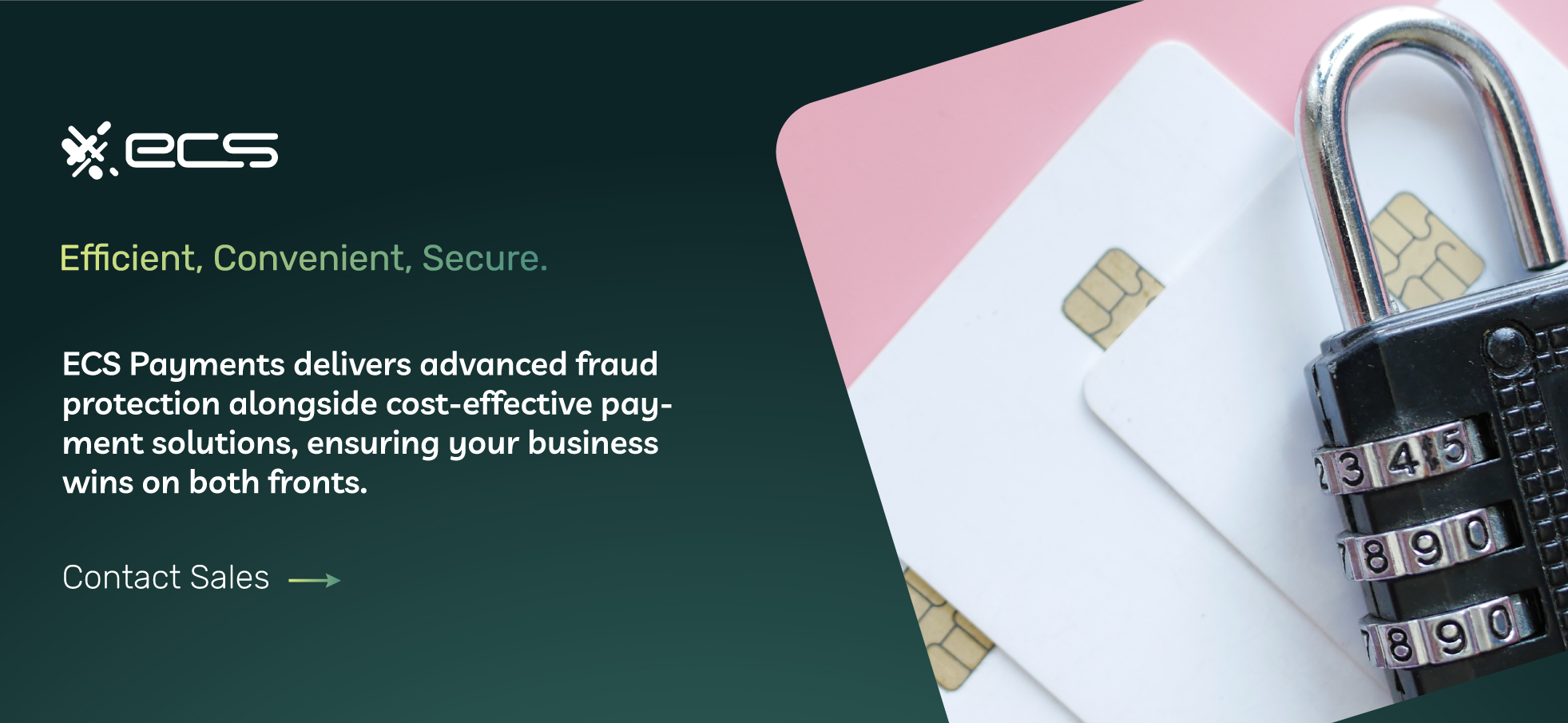

Ransomware
One of the fastest-growing threats to e-commerce businesses is ransomware. In a ransomware attack, a hacker will install malware onto your systems. Hackers can install malware through any of the methods mentioned above.
After some time, the malware activates, essentially locking all of your data and other software. You cannot access the encrypted data now. The malware will then display a message indicating the attack and request payment to decrypt your data.
This type of threat puts e-commerce businesses in a terrible position. Firstly, this usually forces their sites offline, and they can no longer accept payments. Next, they may pay the ransom and hope for the release of the data.
Sometimes, a business can use backups to restore the data. But this process takes time. The IT department will have to go through each backup until they find copies made before installing the ransomware.
Many large businesses have endured weeks of ransomware disruptions before fully resolving them. For a smaller business, being offline for weeks could result in catastrophic losses. So, protecting an e-commerce business against the growing threat of ransomware attacks should be a top priority.
SQL Injections
Structured Query Language, or SQL, is a language designed for managing data. Virtually every e-commerce business uses SQL to manage data and access databases. For example, an e-commerce site based on WordPress uses SQL. Many other shopping platforms and shopping carts also use SQL when reading and writing to various databases.
An SQL injection (SQLi) comprises this flow and data, allowing a hacker to either steal the data or change it if they want. The result of an SQL injection can be anything from changing values on a website to obtaining all customer information.
SQL injection attacks generally fall under three categories.
In-band SQLi: This is the most common type of SQLi, and it uses the same channel to launch the attack as it does to retrieve data. In-band SQL attacks are also the simplest type of attack.
These attacks generally involve hackers trying to induce error messages from the SQL database. The hacker can use those error messages to learn about the system.
Inferential SQLi: Inferential SQLi attacks are more sophisticated. The hacker will send payload data to the server and then read the responses. This technique gives the hacker insight into the database and the overall system structure.
Out-Of-Band SQLi: This type of SQLi takes advantage of enabling certain features on the e-commerce website. For example, businesses that set up their own WordPress hosting may not understand all of the correct security settings needed on their server. A clever hacker can discover the enabled settings and initiate an attack.
This is why it’s so essential that e-commerce businesses use a fully managed server. If not, they must fully understand the security settings necessary to avoid particular vulnerabilities.
Cross-Site Scripting (XSS)
Cross-site scripting (XSS) is similar to an SQL injection. XSS attacks take advantage of web applications that accept user inputs. The hacker executes malicious codes, such as browser scripts, which begin the attack.
E-Skimming
You’ve probably heard of skimming in local news reports. Skimming is when a criminal places a device known as a “skimmer” on a payment terminal. The skimmer then steals the card information. The transaction goes through typically, but the criminal now has all the credit card data.
This skimming can happen with an e-commerce site as well. The most common way that hackers conduct e-skimming is by installing malicious software. The goal of e-skimming is to go completely undetected. So, this type of attack usually has no signs of anything wrong.
With e-skimming, the longer it goes undetected, the more card data the hacker can steal. E-commerce businesses are at risk of e-skimming when they use out-of-date software or plugins. For example, hackers can install malicious code on shopping cart software that is out of date.
This can also happen with shopping platform plugins or apps that are outdated or no longer secure. To combat e-skimming, keep all your e-commerce platform applications up to date and ensure that the vendor still supports them.
Distributed Denial of Service (DDoS)
Distributed Denial of Service, or DDoS, is another attack you’ve likely heard about in the news. You may have experienced it when trying to access various sites. A DDoS attack uses a network of “bots” to flood a website with data requests.
These requests overwhelm the server, making the site inaccessible to regular users. People usually carry out DDoS attacks for two purposes.
The first reason is simply for malicious reasons. Sometimes, a competitor does this to take your business offline and erode trust in your brand. The other reason can be more complicated.
Some DDoS attacks are a cover for other malicious activity. A hacker can use the DDoS attack to read server responses. They can also access other systems while the DDoS attack is active.
With both types of attacks, you can usually prevent this or stop them with filtering done at the server level. This filtering blocks the incoming false requests over time. Several services, such as Cloudflare, protect against DDoS attacks.
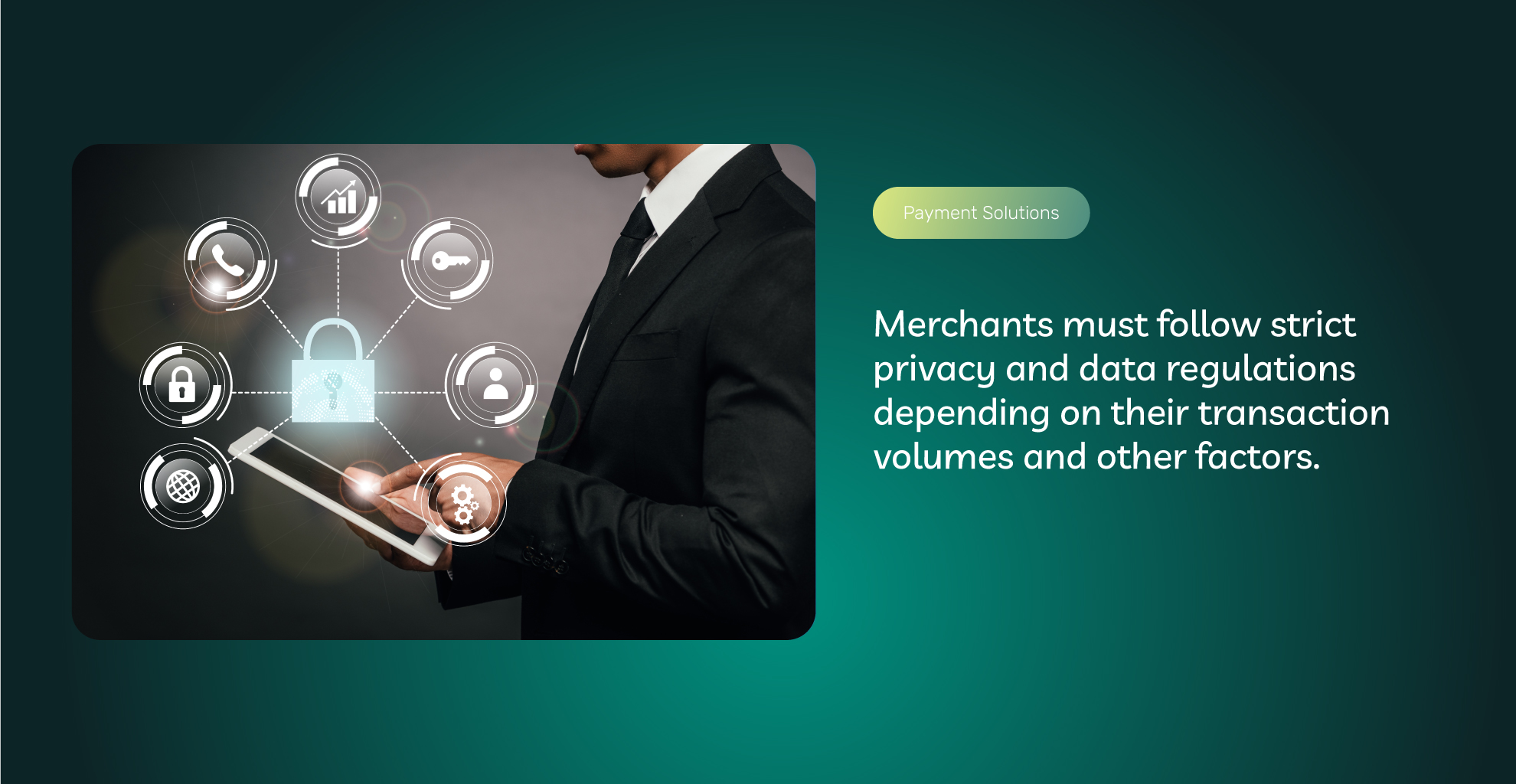
Brute Force Attacks
Brute force attacks are similar to DDoS attacks. The attacker tries to use overwhelming force to get past web application security features. An example of this is to use a password cracker. These use random numbers to try to guess login credentials.
If the computer system has no limit on the number of log attachments allowed, these primitive brute-force attacks can work. A popular example of this was when Apple iCloud did not have a limit on the number of login attempts allowed. Hackers could then use brute force attacks if they had the user’s login name.
Configuring your network software properly can mitigate brute-force attacks. For example, always limiting the number of logins or restricting logins to specific IPs. Services such as Cloudflare can also help to detect brute force attacks and filter out the attacker’s IP address.
Insider Threats
When most people think of e-commerce security threats, they think of outside actors. These actors can be hackers or other cybercriminals looking to steal data. However, there are also threats known as insider threats.
An insider threat is an attack that originates from within a company. It can also be when someone inside a business acts in a way that allows hackers to gain access, even if it wasn’t intentional. Insider threats for an e-commerce business generally fall under three distinct categories.
Negligence
Negligence is when an employee unintentionally leaves an opening for a hacker or cybercriminal. One common example of this is poor password usage. An employee may repeat usernames and passwords for various accounts, which can create an opening for hackers.
Other examples can be not updating their anti-virus or anti-malware software, leaving their devices vulnerable to many types of attacks. Most of these are unintentional, and the way to fight this is through employee education. Having a direct point of contact if employees have security questions is also a good idea.
Intentional Acts
These can be the most dangerous. Intentional acts or sabotage is when an employee with privileged access uses that access to harm the e-commerce business. These can be incredibly hard to detect, but techniques such as zero-trust architecture (ZTA) can help limit the damage.
Vendor or Third-party Threats
Many e-commerce businesses use third-party vendors for a host of reasons. Some of these vendors may be web developers, designers, or even large customers. If they have access to your e-commerce infrastructure, they can become a threat to security.
The best way to mitigate these third-party risks is to correctly vet different vendors. When giving vendors access, ensure they only have access to what they need to complete the job.
Setting up special permissions for that vendor can help if you don’t want to give them blanket access. Special permissions benefit both your business and the vendor, removing the possibility of a threat.
Another helpful tip is to remove permissions when the work is complete. For longer projects, e-commerce businesses sometimes forget that they gave a vendor such widespread access. Those logins and passwords remain active afterward.
Make sure to delete those accounts when they are no longer needed. When you have turnover within your business, this is another chance to remove old logins and passwords to prevent unwanted access.
E-commerce Security Best Practices
While there seem to be endless website threats, there are also many tangible things e-commerce business owners can do to mitigate those risks.
Many of these are not that costly, making these electronic commerce security strategies well worth the investment compared to the possible damage of a security breach.
Create A Company-Wide Password Policy
Left on their own, employees will generally choose easy-to-remember passwords. To prevent this, create a company password policy.
Your password policy should include information on password security. The policy should also include the use of a password manager. For larger businesses, you may want to specify a specific password manager.
A good password policy not only reduces security breaches but can also limit the damage if a breach takes place.
Create A Plan To Update Software Regularly
Many e-commerce businesses run on platforms such as WordPress. These platforms make building and customizing a site much easier but have risks.
The most significant risk for these platforms is the use of plugins. Plugins add functionality, but if outdated, present a huge security hole. Hackers can easily determine your plugin versions and then begin an attack when they detect an obsolete version.
Ensure that you set all of your platform’s software to auto-update. If this isn’t possible, have a regular schedule to check for updates and apply them as needed. Out-of-date software creates one of the most significant security risks for e-commerce businesses. So always make sure you have a plan to keep every system updated as soon as a patch becomes available.
Use Zero Trust Architecture (ZTA)
Zero Trust Architecture (ZTA) is for larger e-commerce businesses that create and maintain their own infrastructure. ZTA is a security technology that constantly checks user access as the user moves around the network.
Instead of verifying a user’s credentials only once when they log in, the system constantly re-verifies them. Even if your business doesn’t build its infrastructure, you should ensure that your vendors and suppliers use ZTA when appropriate.
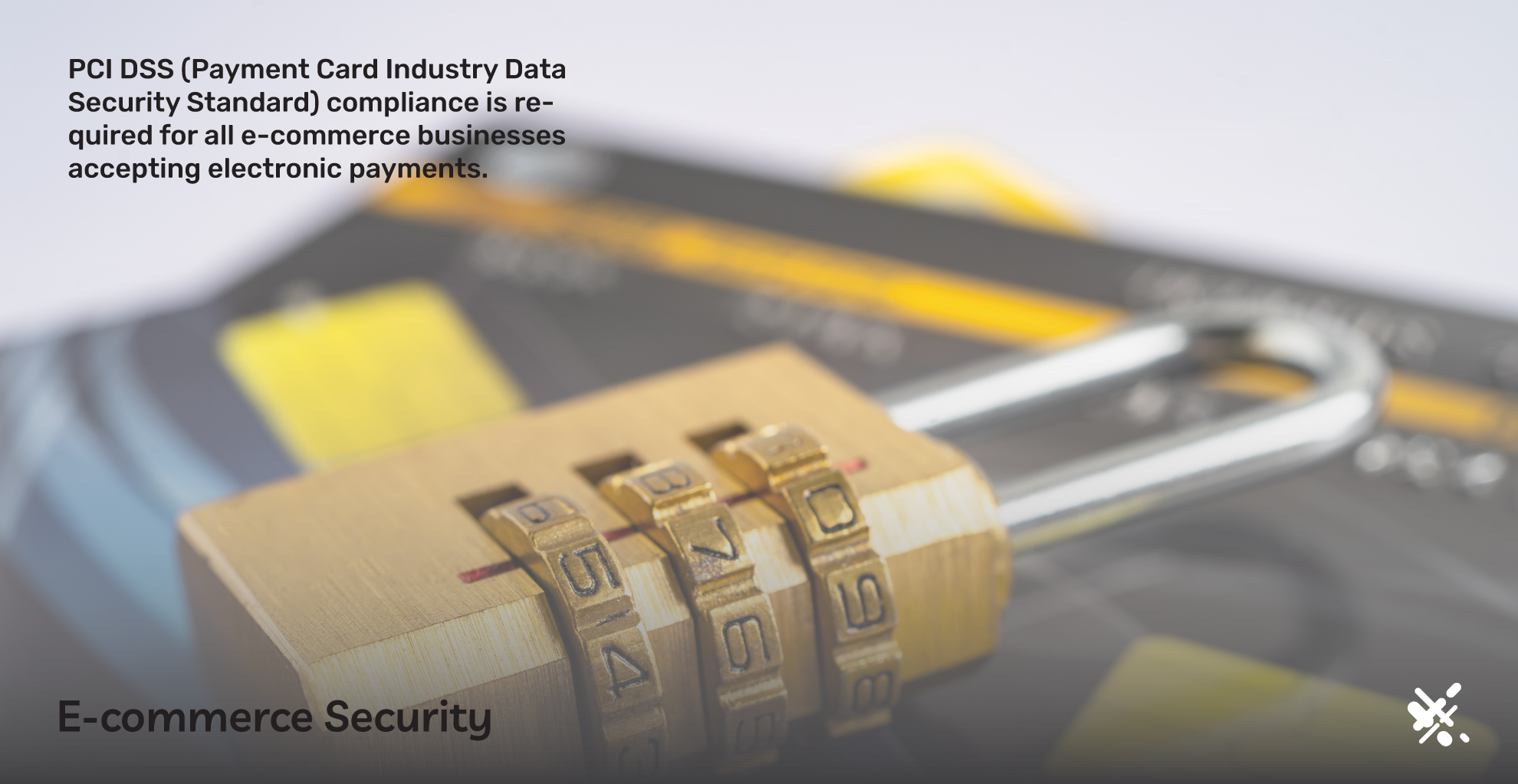
Create a Robust Backup and Recovery Strategy
Sometimes, the difference between a minor security issue and a catastrophic one is the level of backups available. Your e-commerce business can have difficulty recovering from a data breach or loss without a sound backup strategy.
Single backups are never enough, and instead. Your backups should follow a careful strategy that creates a rolling system that makes recovery much more manageable.
Depending on your e-commerce business, you might need several different backup plans for different areas of your business. One area of backup can be for the website itself. Other backups can include databases related to the function of the website. Your customer files may also need their own separate backups.
Many third-party providers offer backup services. Some of these are on-site, and others are entirely in the cloud.
Perform a Security Audit
A security audit essentially puts you in the mindset of a hacker. You then audit your systems to identify weak points or areas that make for attractive targets. You can start a security audit by first focusing on internal business operations. Then, move on to external threats and any vulnerable areas.
A security audit can be anything from a simple checklist to an elaborate system. It depends on the size of your business and the number of assets it has.
Security Education
Educating your employees can help to maintain your existing security protocols. Many employees may not understand the importance of security or the different vulnerabilities. Every employee should undergo training on basic security protocols and should understand their importance.
Next, you want to create a line of communication so employees can contact someone with any security-related questions. This includes if they suspect a security issue or breach.
Often, an employee will notice a breach or strange behavior, but they are unsure who to notify. To minimize the damage, early detection of the breach is critical. Employees can be a great asset in implementing security. So ensure they always have the tools to keep your business safe.
Always Maintain PCI DSS Compliance
If you operate an e-commerce business, that means you accept electronic payments. Every merchant accepting credit cards must comply with the Payment Card Industry Data Security Standard (PCI-DSS).
PCI DSS helps regulate payment security in e-commerce and other situations. The goal is to protect the integrity of the entire credit card payment system. However, these guidelines will also improve an e-commerce business’s overall security.
Many consider the PCI DSS regulations as best practices for e-commerce security. So, in most cases, you should already follow these guidelines.
If not, this is the perfect time to ensure your business is compliant. You’ll avoid any issues with your e-commerce merchant account and lower the risk from hackers or cybercriminals.
More Information About E-commerce Security Practices
Accepting electronic payments online is what makes e-commerce possible. But this also makes e-commerce a target for hackers and other criminals.
To help maintain security, you need a trusted payment partner that understands how to fight fraud and keep your business secure.
At ECS Payments, we work with e-commerce businesses nationwide to help them reduce their security risk while saving money using the latest payment solutions.
Contact ECS Payments today to learn more about our advanced fraud and security protections that help your business succeed in any situation.
Frequently Asked Questions About E-Commerce Security
E-commerce security are the measures put in place to protect an online business from unauthorized access, data breaches, and fraud. The high growth rate of e-commerce makes it a prime target for cybercrime. A security breach can result in significant monetary and reputational damage. Contact ECS Payments to start processing on payment gateways with advanced fraud protection and security measures to ensure the safety of sensitive business and consumer data.
E-commerce threats include phishing attacks, malware, ransomware, SQL injections, cross-site scripting, e-skimming, DDoS attacks, brute force attacks, and insider threats. ECS Payments assists our merchants with advanced payment security measures, including an in-house risk team, transaction monitoring, encryption, and tokenization.
PCI DSS (Payment Card Industry Data Security Standard) compliance is required for all e-commerce businesses accepting electronic payments. It helps maintain payment security and safeguard sensitive consumer information. ECS Payments makes it easy to maintain PCI DSS compliance with our trusted merchant service partnerships.
Best practices for e-commerce security include establishing a company-wide password policy, regular software updates, implementing a Zero Trust Architecture (ZTA), ensuring a robust backup and recovery strategy, performing regular security audits, providing education for employees, and maintaining PCI DSS compliance.
